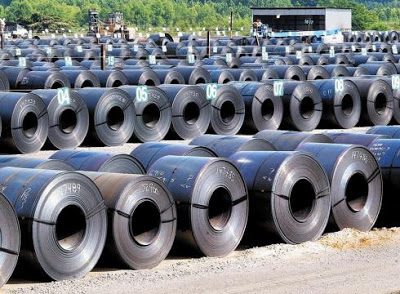by Hubert Marleau, Market Economist, Palos Management
May 2, 2025
Last week, I listed 10 factors that the bulls saw that explained why POTUS blinked and pivoted. I wrote: “I’m not in the know, and therefore incapable, of putting any tariff numbers on what we are going to end up with. What it does look like, however, is that Trump is executing a tariff-reversal in stages, amid the harsh reaction of the financial markets, broad condemnation by business, and sharp rebuke from the rest of the world. Finally, listening to economic reality, heeding to the polls, the verdicts of David Ricardo and Adam Smith, and realising that US diplomatic sway is rapidly ebbing, my bet is that Trump will settle for a 10% tariff rate across the board and an extra 25% tariff rate on a few specific industries that are judged militarily strategic.’’
Because US growth has been spurred by a tremendous amount of fiscal stimulus, which was even more electrifying than the record surge in productivity, Americans have consumed more than they were capable of producing. This anomaly has allowed corporations to raise the price of goods and services sold more than their input cost, boosting corporate earnings through higher profit margins and revenues. This remarkable phenomenon is called “American Exceptionalism”.
Because Americans consume more than they produce - the difference is borrowed from foreigners and/or funded with government payment transfers, hence trade and budget deficits: the so-called twin deficits - economic outlook is dependent on how these 2 shortfalls will balance out from hereon. This could become a very difficult task. For example, Kato, the Finance Minister of Japan, said he could use its $1.0 trillion-plus holdings of US treasuries as a card in trade talks. Meanwhile, so far, the estimated DOGE spending cuts amount to only $150 billion, Musk’s pledge having been $1.0 trillion. Turning budget proposals into law is not a slam dunk, since the Republicans control Congress by narrow majorities.
In this connection, there are 2 big issues that must be protected. First, for the dollar to hold its value with no collateral behind it, world confidence in the US has to be maintained. In this regard, the Fed must remain politically independent, and certain members of the Trump team must stop speculation that they might cajole foreign creditors into accepting lower returns on their Treasury holdings in exchange for American military protection or better tariff deals. Second, the fiscal position will need to be carefully managed by DOGE, only cutting only those expenses that do not hamper government transfers like social security and medicare care, in order to keep consumer spending humming.
Assuming that foreigners will not abandon the US dollar and DOGE will not crush spending, except where waste is obvious and/or effects on the economy are minimal, Trump’s skinny budget plan proposes a non-defence, discretionary spending reduction of $163 billion. Thus the economic outlook and its residual effect on corporate earnings will be a function of what his Administration will do about trade and taxes over the next 100 days.
In this connection, he will have to change the narrative on 3 fronts: roll back trade uncertainties of reciprocal tariffs with acceptable deals; invigorate the economy, which could be on the brink of a recession, through new tax incentives; and assure the financial markets that the Fed will remain independent, but under a different ‘modus operandi’. All 3 things are needed to defeat the headwinds to US economic growth head-on and to keep the U.S. Treasury market - the largest and most liquid capital market in the world - liquid to assure the funding of the ‘twin deficits’ without hiccups, and to continue to benefit from the recycling of excess dollars abroad into S&P 500 companies.
Unfortunately, Trump needs to move fast because there are only 2 or 3 months of wiggle room left. The Conference Board has already warned that the so-called expectations index, which measures how people think the economy will look 6 months from now, tumbled 12.5 points in April to 54.4, the weakest reading since October 2011, and well below the threshold of 80 that usually signals a recession ahead. Maybe it’s already here. According to a new poll of 300 senior executives conducted by Harris Poll, 84% were very concerned about how the current political and legal climate, plus executive orders and policies, will affect the competitiveness of their businesses.
Meanwhile - surprise, surprise - the level of real economic activity contracted 0.3% in Q1. The Bureau of Economic Analysis highlighted that without the contribution of a big rise in inventories, the GDP figures would have contracted at a scary annualised rate of 2.5%. The data docket was going to be jam-packed with high-profile prints for April from the likes of ADP, the Institute of Supply Management (ISM), the Bureau of Labor Statistics (BLS), Challenger, Gray and Christmas (CGC), the Conference Board (CCI), and the Department of Commerce. None promised a revival in the level of economic activity: the ADP said that only 62.000 jobs were created in April, while the forecast had been 120,000; the ISM reported that manufacturing output fell back into contractory territory; the CGC announced that layoffs were 63% higher than last year; and the BLS reported a slowdown in employment growth.
Put simply, the economy is on the precipice of a self-inflicted recession.
If Trump doesn't heed these warnings, he might fail. As a matter of fact, Republican lawmakers are struggling to sell the Administration's economic plan as it is, pressuring him to reconsider some of his trade policies.
- On trade, he needs to do something big to fix the assault. The truth is that his tariffs will increase inflation and decrease real income. They have already shaken global confidence in US reliability, and paralyzed capital spending plans, and are giving an advantage to
China, which is courting U.S. allies instead, as a more dependable giant market. However, there are signs that the Trump Administration is finally recognizing that something has to be done quickly. First its tariff negotiators plan to use a framework prepared by the U.S. Trade Representative's office (USTR), arranged in a manner to move ahead fast with willing trading partners, and which also lays out broad categories for negotiations: tariffs and quotas; non-tariff barriers to trade, such as regulations on
U.S. goods; digital trade; rules of origin for products; and economic security. Second, talks with Japan, Canada and China are scheduled for next week.
- On taxes, a pro-growth tax bill is set for July 4. Treasury Secretary Scott Bessent believes that the House is moving things along quickly, and the Senate is in lockstep because they are in substantial agreement. The main objective is to extend provisions of the 2017 Tax Cuts and Jobs Act due to expire in 2026 that should save taxpayers about $4.6 trillion over 10 years. Smartly, the bill includes a 100% expense for equipment and factory structures, eliminating taxes on Social Security income and allowing for deductibility of auto loans.
- On monetary policy, Trump backed off his threat to fire Powell, accepting that the operational independence of monetary policy is chiefly that of the Fed. However, it will become nearly impossible in the future to use the Fed to indirectly subsidise government deficit spending and assure that its core duty is tied solely to price stability and full employment.
So What Went On Last Week ended May 2?
Over the weekend, not much of any significance was said that we did not already know. The New York Times/Siena poll showed that 76% of its respondents disapproved of Trump’s handling of the economy, and 55% opposed his use of tariffs. Pundits believe that the polls could worsen as the effects of the trade war become more visible. This has already started. Cargo ship traffic is plummeting and inventories are depleting. CEOs of several S&P 500 companies warned that shape-shifting tariff threats make it virtually impossible to plan and are spooking consumers. To counteract this, President Trump floated new income tax cuts in a bid to ease the tariff bite, even suggesting the Americans could become free of income taxes as a result of tariff revenue.
On Monday, the stock market struggled for traction after a 4-day rally as pertinent economic data loomed. The session ended the day mixed with a measly 0.1% increase for the S&P 500.
On Tuesday, Trump confirmed that the government will spare carmakers from stacking tariffs on car parts and duties on steel and aluminum following intense lobbying. Commerce Secretary
Horward Lutnick said: “I have a done deal”. With the help of good earnings results, the S&P 500 rose 0.6%.
On Wednesday, we got a snapshot on what is going on in the economy. First, ADP reported that only 62K jobs were created in April, vs a forecast of 120K, asking why anyone would make hiring decisions in such an environment. Second, the economy contracted at an annual rate of 0.3% Q1, weighed down by a deluge of goods imported by businesses eager to avoid higher costs. The equity markets were weak all day, but the S&P 500 rebounded nicely in the final hour, rising 0.3% to 5569.
OnThursday, the S&P 500 dug itself out of a hole, notably above its April 2 levels, rising 0.6% to 5604, as Microsoft and other tech giants outperformed.
On Friday, BLS reported that the labour market showed little sign of damage from tariffs, as the economy had added 177,000 jobs, keeping the unemployment rate steady at 4.2%, giving Trump more time to negotiate trade deals. Moreover, investors were pleased that China had provided some optimism, as a Commerce Ministry spokesperson had informed the US government that its door was wide open in evaluating a U.S. offer for talks. By the end of day, the S&P 500 was up for the 9th straight sessions, by 1.5% to 5684
The Near-Term Stock Market Outlook
Given all the distortions, interpreting the co-existence of the latest batch of weak economic indicators, but strong market numbers, is near impossible, making the rally confusing. And yet the bulls are back. Why? First, federal funds rate futures show that the market expects four to five 25 bps cuts in the policy rate over the next 12 months to 3.25%. Second, headline and core PCED inflation rates are coming closer to the Fed’s 2.0% target. Third, a back-of-an-envelope calculation tells us that productivity gains are holding: business capital formation has remained strong especially in productivity-enhancing sectors like business equipment, information processing and data centers, which incidentally soared at an annual rate of 56.2% Q1. In this regard, it is more likely that we will end up with a slowdown than a recession.
Consequently, I’ve altered my view on the trading range for the S&P 500 to 5500 and 6000 from a previous forecast of 5300 and 5600 Earnings results for Q1 have been good, but the reluctance of corporate bosses to offer guidance until the tariff situation is resolved should prevent investors from leveraging from hereon. In this connection, there is not much that investors can do right now other than to sit tight and hold their ground, and perhaps add to their positions to lower their cost averages
Copyright © Palos Management















